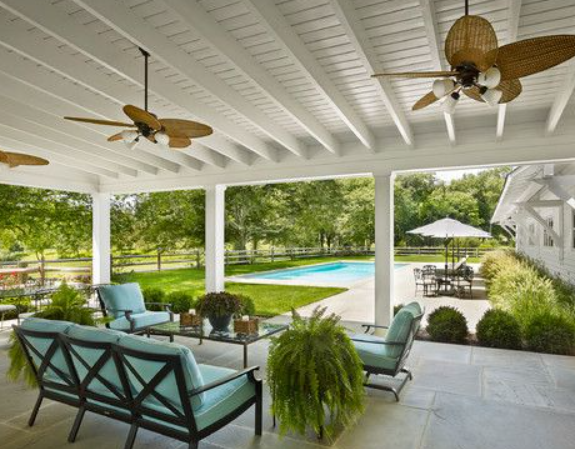
Managing stormwater effectively in your garden is essential to prevent waterlogging, soil erosion, and damage to plants or structures. A rainproof garden handles heavy rainfall — and adds functionality and aesthetic appeal to your outdoor space. With thoughtful design and affordable solutions, you can ensure your garden thrives regardless of the weather.
Understanding Your Garden’s Drainage Needs
Before implementing any solutions, assess how rainwater behaves in your garden. Take note of areas that collect water, slopes that channel runoff, and any hard surfaces that may contribute to water pooling. Identifying these trouble spots helps you focus your efforts where they’ll have the greatest impact.
Remember that gardens with clay-heavy soil or compacted ground often struggle with drainage, as water tends to sit on the surface. Introducing permeable materials and smart water management solutions can alleviate these issues.
Permeable Surfaces: A Key Solution
One of the most effective ways to rainproof your garden is by incorporating permeable surfaces. Unlike concrete or asphalt, these surfaces allow rainwater to soak into the ground, reducing runoff and minimizing the risk of flooding.
Gravel is a popular and affordable option, but it can shift or wash away during heavy rain. Using gravel grids underneath ensures the gravel stays in place while maintaining its permeability. These grids stabilize the surface, prevent erosion, and create a tidy, durable base for pathways, patios, or driveways.
You can combine gravel grids with decorative aggregates that complement your garden design for a more polished look.
Swales and Rain Gardens
Creating swales or rain gardens is a natural way to manage stormwater. A swale is a shallow, landscaped channel designed to slow and direct rainwater, while a rain garden is a planted area that absorbs and filters runoff.
To build a rain garden:
Choose a low-lying spot where water naturally collects.
Add a layer of gravel or sand for drainage, followed by well-draining soil.
Plant hardy, water-tolerant species like sedges, irises, or native wildflowers.
Gravel grids can be used at the edges of swales or rain gardens to stabilize nearby pathways or prevent soil erosion.
Incorporating Raised Beds
Raised beds provide a practical solution for gardens prone to waterlogging. Elevating the planting area improves soil drainage and protects plants from excess moisture. To create a well-draining medium, use a mix of compost, sand, and lightweight soil.
Position gravel grids around the base of raised beds to create tidy walkways that stay dry even after heavy rain — making the garden easier to navigate and preventing muddy patches from forming.
Rainwater Harvesting
Collecting rainwater is an eco-friendly way to reduce runoff while providing a sustainable water source for your garden. Install rain barrels or water butts beneath your gutter downspouts to capture and store rainwater.
You can take it a step further by connecting the barrels to a drip irrigation system, ensuring your plants receive a steady supply of water during dry spells. To prevent overflow during storms, ensure your barrels have an overflow valve directed to a permeable area or a rain garden.
Green Roofs and Living Walls
If you’re looking for an innovative way to manage stormwater, consider adding a green roof or living wall to your outdoor space. These structures absorb rainwater, reducing runoff and providing insulation for your home or shed.
While green roofs require structural support and careful planning, smaller installations like shed roofs or vertical planters are more accessible DIY options. Pair these with the permeable surfaces below to manage any excess water effectively.
Preventing Erosion on Slopes
If your garden includes slopes, managing stormwater is crucial to prevent erosion. Terracing is a practical solution that breaks slopes up into level sections, slowing water flow and reducing soil loss.
Incorporate gravel grids on sloped paths or terraced sections to create a stable, non-slip surface that helps with drainage. This approach ensures long-term stability when combined with sturdy retaining walls or planted ground cover.
Designing for Water Flow
A rainproof garden doesn’t just manage stormwater—it directs it to areas where it can be used or absorbed. Use the natural contours of your garden to guide water flow toward rain gardens, swales, or permeable surfaces.
Strategically placed edging, gravel-filled channels, or even decorative stepping stones can help redirect water while adding to the overall design of your garden. Gravel grids can discreetly stabilize these features, ensuring they remain effective over time.
Regular Maintenance for Long-Term Success
Once your stormwater management solutions are in place, regular maintenance ensures they stay effective. Clear debris from gutters, swales, and rain gardens to prevent blockages check gravel surfaces for shifting or erosion, and rake them back into place as needed.
If you’ve used gravel grids, they’ll require minimal upkeep, but a periodic inspection ensures they remain free of obstructions that could impact drainage.
A Garden Ready for Any Weather

Rainproofing your outdoor space protects your garden from heavy rain and enhances its overall usability. With permeable surfaces like gravel grids, natural solutions such as rain gardens, and thoughtful design to manage water flow, your garden can easily handle stormwater.
By implementing these strategies, you’ll create a resilient, beautiful outdoor space that thrives in any weather — making rainy days just another opportunity to enjoy your garden.




(0) comments
Welcome to the discussion.
Log In
Keep it Clean. Please avoid obscene, vulgar, lewd, racist or sexually-oriented language.
PLEASE TURN OFF YOUR CAPS LOCK.
Don't Threaten. Threats of harming another person will not be tolerated.
Be Truthful. Don't knowingly lie about anyone or anything.
Be Nice. No racism, sexism or any sort of -ism that is degrading to another person.
Be Proactive. Use the 'Report' link on each comment to let us know of abusive posts.
Share with Us. We'd love to hear eyewitness accounts, the history behind an article.